And onto the Darth Vader Breath…
The Breath
Ujjayi Breath – Victorious Breath to “Ham Sa”
A breath to center you, help with focus. Energizing and warming to the body. Great for better respiratory function. Another benefit may be humidfied air going in, dust particles going out of the nostrils and lungs. Supports releasing feelings of frustration or anxiety.
Air is drawn in through the nostrils (inhalation) and the back of the throat (glottis) is slightly closed which moves the air down the trachea and into the lungs more efficiently creating a warmth. The exhalation releases from the lungs and travels up the trachea through this smaller opening out of the nostrils. The sound closely resembles an ocean wave moving into the shoreline or for Star Wars fans, Darth Vader sound. Don’t tightly close the back of the throat in this breath, better a gentle close.
“Ham Sa” Sound Meditation
| Hamsa Mantra – a simple breath practice |
(source: http://www.yinyoga.com/ys2_2.2.7.3.1_hamsa_mantra.php)
| On average, twenty-one thousand, six hundred times a day we chant the mantra Hamsa. “Ha” is the sound of the breath on our exhalations and “sa” is the sound of the inhalations. Some traditions reverse this, and the mantra is called “So’ham” – we hear “hmmm” on the inhalation and a sighing “sa” on the exhalation. Iyengar says they are actually combined; every creature creates so’ham on the inhalation (which means “He am I”) and hamsa on the exhalation (which means “I am He”). This is called the “ajapa mantra.” [1] While we chant this barely audible mantra with each breath, we can feel energy moving within us. Close your eyes and notice the way your energy state is altered while you inhale and exhale. Experiment with hearing “ham” on the inhalation and “sa” on the exhalation. Does this feel energizing or calming for you? Next reverse it: hear “sa” on the inhalation and “ham” on the exhalation. Does this change the energetic feelings? Many teachers will claim that hamsa is energizing and so’ham is relaxing. They teach that when we hear so’ham, prana is descending. On hearing hamsa, shakti (energy) rises. Other teachers claim the exact opposite. Of course, we are all different; half of us are natural belly breathers, half are chest breathers. It is not surprising that everyone doesn’t respond the same way. You will need to experiment and find out which form of hamsa breathing energizes you, and which form calms you. Once you know, then you are ready to employ this tool in your practice. Preparing for a Yin Yoga class, you may want to use the calming breath. Preparing for a yang practice, you may want to use an energizing breath. Of course, hamsa breathing can be used outside of your yoga practice too. We all have times in life when we are too stoked up and need to relax. The hamsa breath can be useful then. At other times, we need a quick boost of energy, and the opposite breath may be ideal. Instead of reaching, automatically, for that cigarette to calm you down, or that third cup of coffee or a cola to give you a pick-me-up, try working with the breath for a minute or two. You may be surprised at how effective it is, and it is a lot healthier. Now that we know how to stimulate or calm our inner energies, let’s investigate how we can direct these energies. Chinmaya Mudra – Gesture of Embodied Knowledge
|
The Poses
Fish Pose Supported
Props: blankets or bolster, depending upon the amount of opening you desire. Neck roll, eye pillow.
Benefits:stretches the chest wall muscles, releases tightness in the shoulders and low back. Starts to balance nervous system.
Supported Pigeon Variations


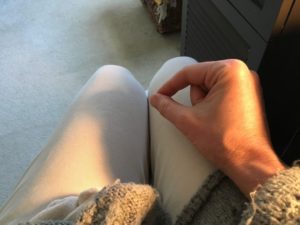
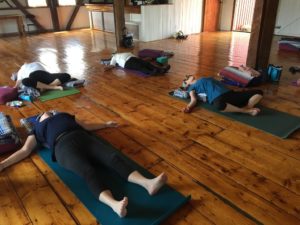

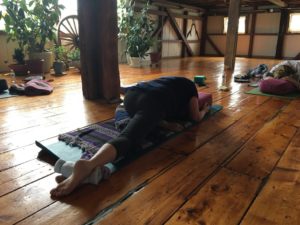
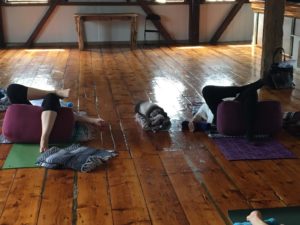
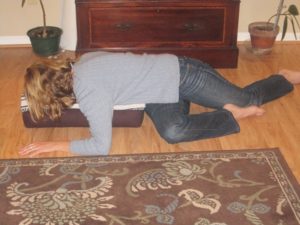
Leave A Comment